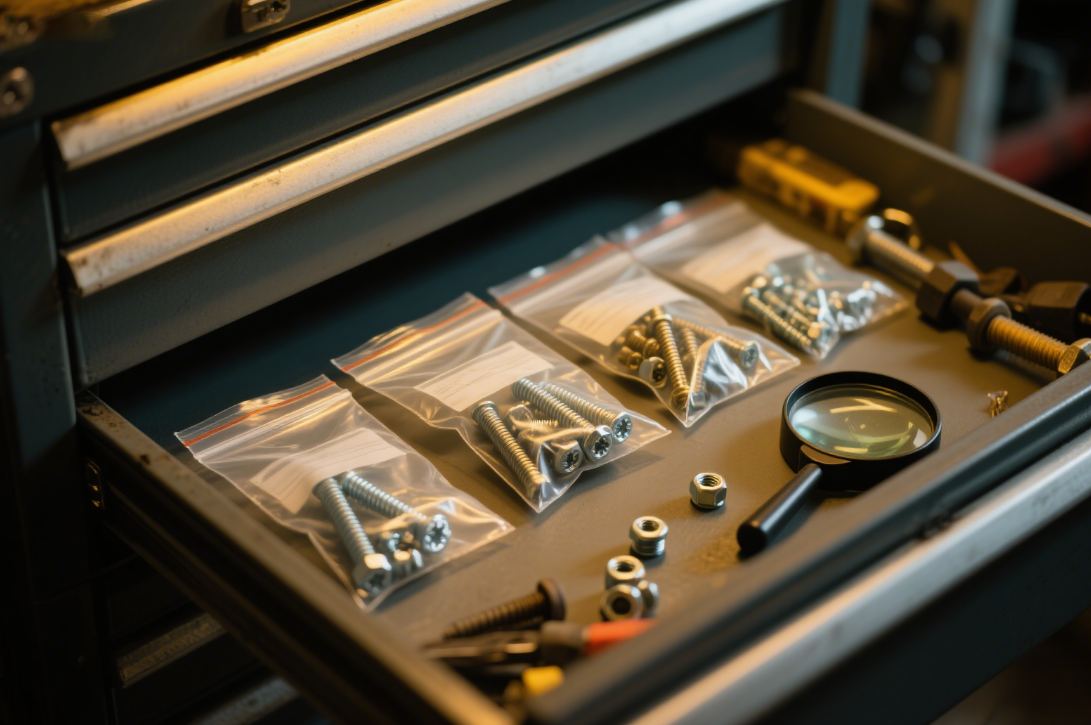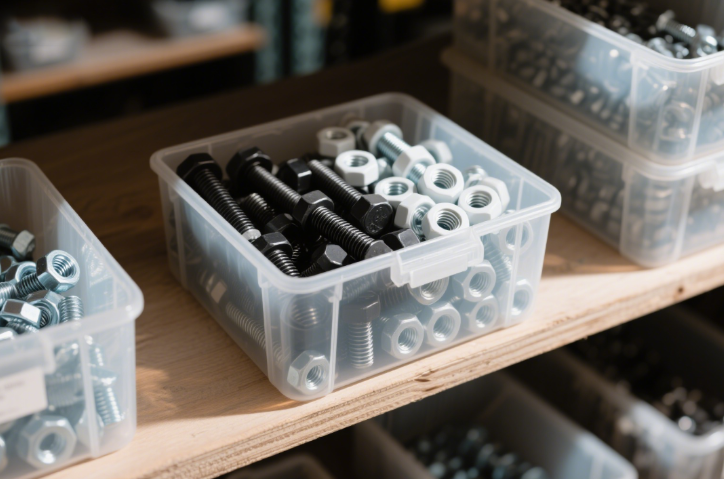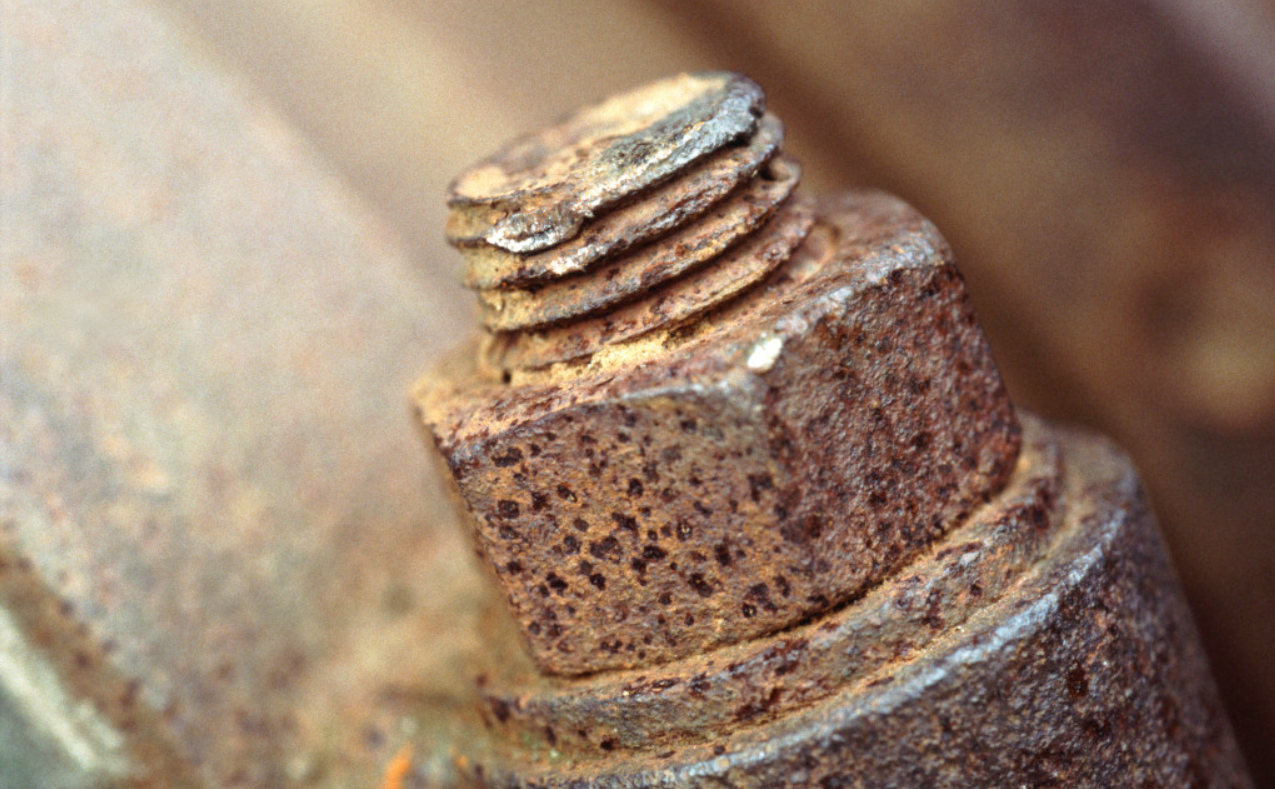Got a bunch of bolts and nuts? Hate when they rust and get stuck way too fast? Don’t throw them away—easy storage tips can keep them working for years.Whether you’ve got a few spares at home or lots for work, there’s a simple fix here. Read on. You’ll learn exactly what to do. No more wasting money on new ones because the old ones rusted.
1. Prevent metal from rusting
Rust is a persistent and irreversible condition for fasteners. It not only reduces the reliability of the connection of the fasteners, but also increases maintenance costs, shortens the lifespan of the equipment, and even poses a threat to personal safety. Therefore, taking measures to slow down the rusting of fasteners is an essential action that cannot be overlooked.
So, how should the purchased fasteners be properly stored?
Whether you’ve got a tiny haul of hardware or a massive bulk order, storing screws and nuts right is key to avoiding rust and chaos. Here’s how to organize them fast—split by “small quantity” vs “large quantity” workflows.
a.For Small Quantities (DIYers, Home Repairs)

Grab Reusable Bags + Labels
Grab zip-lock bags or repurpose small plastic containers from old products (like leftover food containers or supplement jars). Sort the screws and nuts by size and type first—for example, place all M4 screws in one bag and all M6 nuts in another. A handy pro tip: Use a marker to jot down the specs directly on the bag, like “M5 × 20mm Screws (Stainless Steel)”—this way, you’ll instantly know what’s inside without having to open it up.
Add Quick Rust Protection
Store in a “Hardware Station”
b.For Large Quantities (Contractors, Factories)

Batch Sort by Size/Type
Use large plastic bins, and label them clearly—something like “M8 Bolts – Carbon Steel” or “3/8” Nuts – Stainless.” If you’re pressed for time, start by sorting into “size groups” first. For example, toss all small screws (under M5) into Bin A, and medium-sized ones (M6 to M10) into Bin B. This way, you can quickly organize without getting bogged down in tiny details.
Rust-Proof in Bulk
Option 1 (Fastest): Toss 2-3 large silica gel packs (or calcium chloride dehumidifiers) into each bin, then seal the bins with heavy-duty plastic wrap.
Stack Smart
Place the bins on pallets or shelves—never directly on concrete, as moisture can seep up from the ground—and ensure every bin is clearly labeled with details like size/type (e.g., “M12 × 50mm Hex Bolts”), material (e.g., “Carbon Steel, Uncoated”), and storage date (to follow the “FIFO: First In, First Out” rule, ensuring older stock is used first).
Use a “Quick Access” Zone
c.Critical Pro Tips (For Both Sizes)
Don’t store your hardware directly on the floor—moisture can seep up through concrete, so always use shelves or pallets instead. And label everything right away: even if you think you’ll remember where things are, labels will save you tons of time later. Finally, check for damaged pieces first—throw out any bent or rusty ones before storing them, because they can ruin the good hardware around them.
Conclusion
Whether it's a small amount of fasteners for DIY enthusiasts or large quantities of inventory from factories or contractors, the core logic of storage remains consistent: through classification, rust prevention and proper arrangement, each screw and nut is kept in good condition, which is not only convenient to access but also prolongs the service life. Remember, spending a little time on the details of storage not only avoids troubles caused by rust and disorder in the future, but also enables these small parts to "appear when needed and be usable", eliminating unnecessary hassles for your project or work.
Post time: Jul-09-2025


